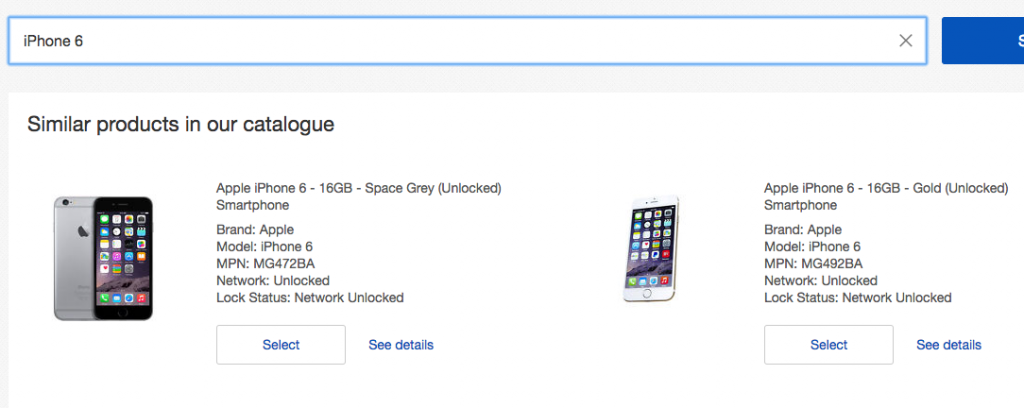As an online seller, there are a number of different channels you can sell your products on, with a range of benefits and restrictions. You can sell on marketplaces such as eBay and Amazon, which offer more exposure to a wider audience, or you can sell on your own site, using Shopify or WooCommerce, which enables you to have more control over your sales. By selling on multiple channels you can take advantage of the benefits of selling on a marketplace and the freedom of your own website.
However, there’s also a lot you need to keep track of; being organized and efficient is key to running a successful multi-channel eCommerce business. Find out our top tips for keeping on top of multiple channels and how it can help you grow your business.
You Don’t Have to Sell on Every eCommerce Channel
Different channels are suited to different kinds of products and businesses – if you’re trying to sell on the wrong channels you’re wasting your time, effort and money.
Unique, handmade products will do best on a marketplace like Etsy, and your own website. Etsy is exclusively for vintage, handmade and craft supplies, so this is where shoppers will expect to find this type of product. You’ll also have more freedom to offer customization and other options for your products.
Often, starting on a marketplace is a good way to establish your eCommerce business, and once you’ve established a base of loyal customers you can start to focus on expanding to your own website.
Understanding the Difference Between Channels
Once you’ve decided which channels are most suited to your eCommerce business, you then need to make sure you fully understand the different rules, requirements and legal obligations for each one. Marketplaces such as eBay, Amazon and Etsy all have their own policies, standards that you need to meet, and different fee structures.
Amazon and eBay both have an existing product catalogs that you can add your listings to, and you’ll then compete against other sellers on price and service, while on Etsy you’ll have to create your own listings from scratch.
Amazon’s Pro Plan, for over 35 sales a month, costs £25 per month, plus you’ll also get charged a referral fee, and a variable closing fee for every transaction. eBay’s Basic Shop plan is £19.99 a month for 250 inclusive fixed-price listings, 50 auction style listings and you’ll have to pay final value fees on each sale as well as PayPal transaction fees. On the other hand, Etsy doesn’t charge any monthly fees but you’ll pay £0.15p for every listing, and be charged a transaction fee and payment processing fee.
Selling on your own website can offer a lot more freedom but there will still be some costs involved. WooCommerce is a free plugin for WordPress websites, but it’s likely that you’ll end up paying for additional plugins that give you more functionality. You’ll also pay transaction fees for card payments and if you don’t have much technical experience you might need to hire someone to help.
Shopify also involves a monthly subscription, and you’ll have to choose and pay for an online payment system. You can find out more about different payment systems for your eCommerce website here: Popular Online Payment Systems.
Spend some time reading up on each platform so that you know exactly what you’re agreeing to and how you need to handle stock, sales, shipping and customer service differently on each platform.
Keeping Track of Your Stock
A big challenge of selling on multiple eCommerce channels is keeping track of your stock. It can be a total nightmare if you sell an item on eBay that you’ve also listed for sale on Amazon and you don’t have the stock to fulfill both orders. You’ll be penalized on marketplaces for any delays in dispatching orders or cancelling them, and on your own website you risk losing the shopper’s trust.
When you first start selling online you’ll probably be able to use a spreadsheet to manage your inventory, however as your business grows and you sell on more channels, you need to look into more efficient methods.
You either need to be able to adjust stock levels on all channels as soon as an order comes in, have separate stock for each channel or use reliable stock management software. Whichever way you choose to handle your inventory, you need to ensure that it’s accurate and effective – stock errors on marketplaces could put your account at risk of getting suspended.
Managing Your Orders
Logging into each eCommerce channel to check, process and dispatch all your orders can be extremely time-consuming. To be successful across multiple channels as your business grows, you’ll need to work on a way to make this process more efficient.
Investing in shipping software such as Zenstores enables you to view and manage your orders from multiple channels, and then print shipping labels. You’ll be able to connect all your eCommerce channels such as eBay, Amazon and Shopify, as well as your couriers. With all orders imported automatically, you can print shipping labels in bulk and mark them as dispatched, which will automatically update on your various selling channels.
Communicating With Customers
Reading and responding to customers’ messages can also be difficult when you’re selling across multiple channels. Buyers will get in touch for a number of reasons: to find out more information about the product, questions about deliveries or returns. The quicker you respond to these queries the more likely an interested shopper will make a purchase, and someone that’s placed an order will have a good experience.
You especially need to be on the ball when it comes to returns. On eBay you have eight calendar days to respond to a return request, while on Amazon if a customer opens an A-to-z guarantee claim you have seven days to respond, otherwise Amazon will close the case in the buyer’s favor. Delays in responding to return requests and guarantee claims can end up costing you a lot of money.
If you struggle to stay up-to-date with all your messages on eBay, Amazon and other platforms, then software like ReplyManager or ChannelReply, which allows you to manage customer messages, can help you out.
It’s also important that if you’re frequently getting asked the same questions you should update your product descriptions or make other important information more accessible to shoppers.
—
Following these tips, and taking time to plan and organize your business, can make selling across multiple channels a brilliant opportunity to reach more shoppers and expand your business. If you have any other advice for selling successfully across multiple eCommerce channels, please share it in the comments.

Verity is a content writer for Zenstores, an order management and shipping platform that connects online stores and marketplaces with leading couriers. By automating the shipping process, Zenstores saves retailers an average of 20 hours a month.
Recommended articles
 Facebook Ads for eCommerce: 16 Strategies, Examples & Tips
Facebook Ads for eCommerce: 16 Strategies, Examples & Tips
 How to Build a Winning eCommerce Ads Strategy
How to Build a Winning eCommerce Ads Strategy
 Google Ads for eCommerce: Everything You Need to Know
Google Ads for eCommerce: Everything You Need to Know
 10X Your Traffic with PPC Management Software
10X Your Traffic with PPC Management Software
Comments
Powered by Facebook Comments






